- Beams
- Trusses
- Frames
- Bracing
- Spheres
- Roof Trusses
- Grillages
- Surfaces
- Curved Surfaces
- Solids
- Concrete Structures
- Steel Structures
- Masonry Structures
- Timber Structures
- Mechanical Engineering
- Process Manufacturing Plants
- Piping Systems
- Bridges
- Cranes and Craneways
- Towers and Masts
- Lift Shafts
- Power Plants
- Escalators
- Glass Structures
- Tensile Membrane Structures
- Cable and Tensile Structures
- Hybrid Structure Systems
- Laminate and CLT Structures
- Hydraulic Steel Engineering
- Buildings
- Temporary Structures
- Aluminum and Lightweight Structures
- Scaffolding and Rack Structures
- Offshore Structures
- Silos and Storage Tanks
- Pressure Vessels
- Renewable Energy Structures
- Shipbuilding and Floating Bodies
- Conveyor Structures
- Drilling Structures and Drilling Masts
- Swimming Pools and Water Parks
- Container Structures
- Foundations
- Stairway Structures
- Facade Structures
- Shelters and Roofings
- Billboard and Traffic Sign Structures
- Connections
- Wind Simulation
- Others
- Geotechnics
- Welded Sections
- Thin-Walled Sections
- Massive Sections
- Aluminum Extruded
- Built-up Sections
- Other Sections
- Description
- Reviews (0)
A thin string is tensioned by the axial force. Determine the natural frequencies of the string.
| 5 star | ||
| 4 star | ||
| 3 star | ||
| 2 star | ||
| 1 star |
| 5 star | 0 | |
| 4 star | 0 | |
| 3 star | 0 | |
| 2 star | 0 | |
| 1 star | 0 |
Verification Example 000106 | 1
| Number of Nodes | 101 |
| Number of Lines | 100 |
| Number of Members | 100 |
| Number of Load Cases | 1 |
| Total Weight | 0.000 tons |
| Dimensions (Metric) | 1.070 x 0.070 x 0.070 m |
| Dimensions (Imperial) | 3.51 x 0.23 x 0.23 feet |
| Program Version | 5.09.00 |
You can download this structural model to use it for training purposes or for your projects. However, we do not assume any guarantee or liability for the accuracy or completeness of the model.

The new generation of 3D FEA software is used for the structural analysis of members, surfaces, and solids.

The Steel Design add-on performs the ultimate and serviceability limit state design checks of steel members according to various standards.
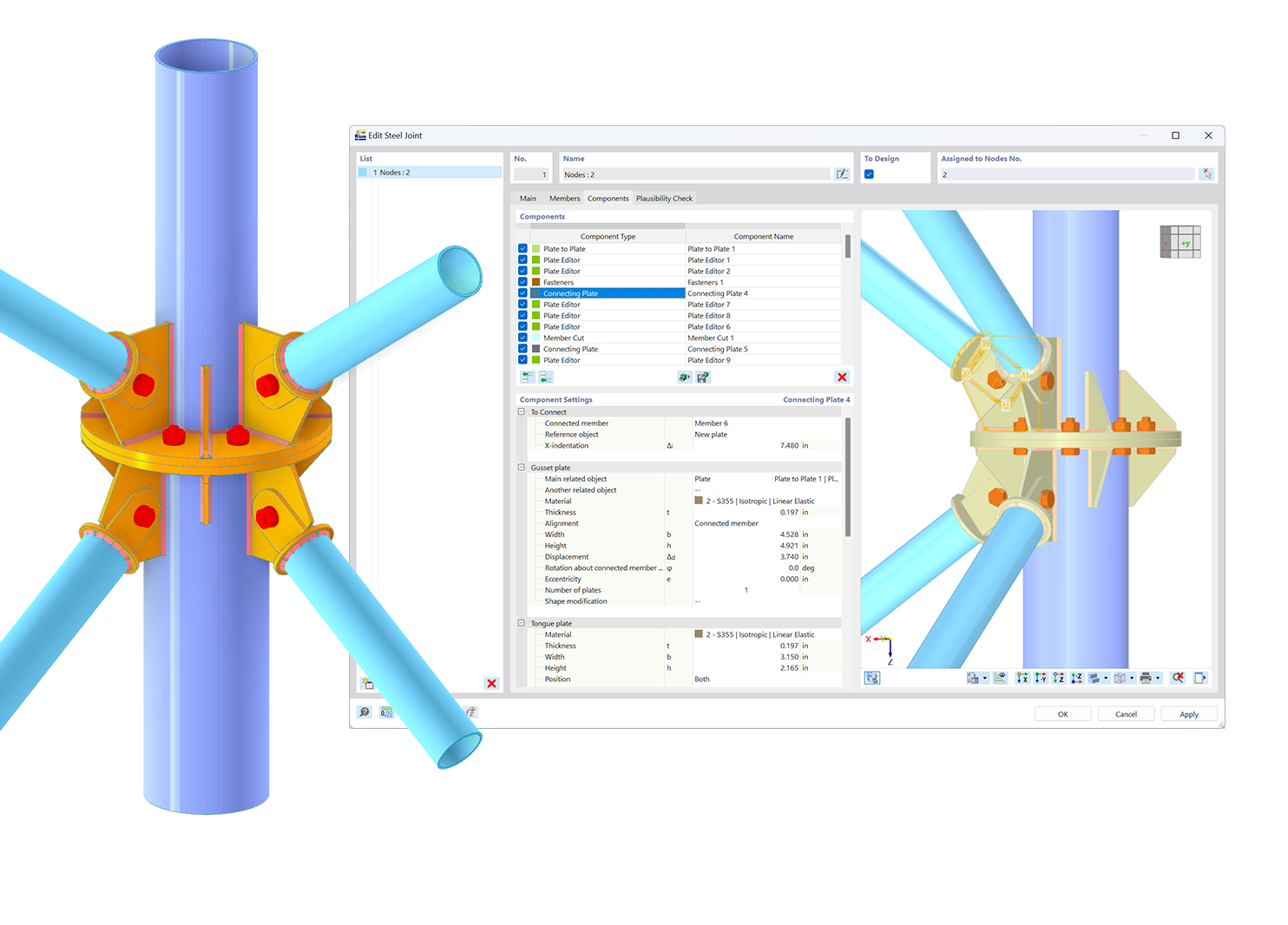.png?mw=600&hash=49b6a289915d28aa461360f7308b092631b1446e)
The Steel Joints add-on for RFEM allows you to analyze steel connections using an FE model. The FE model is generated automatically in the background and can be controlled via the simple and familiar input of components.
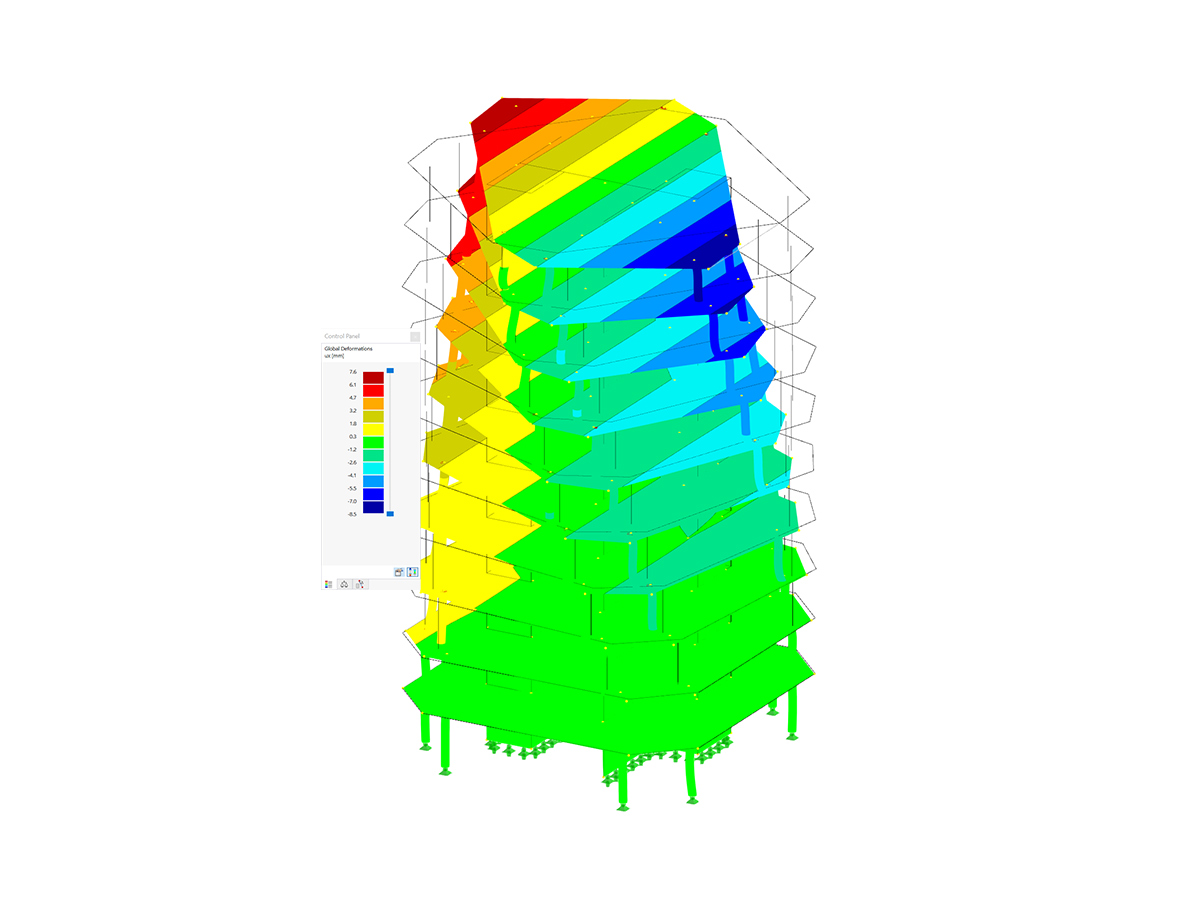
The Structure Stability add-on performs stability analysis of structures. It determines critical load factors and the corresponding stability modes.
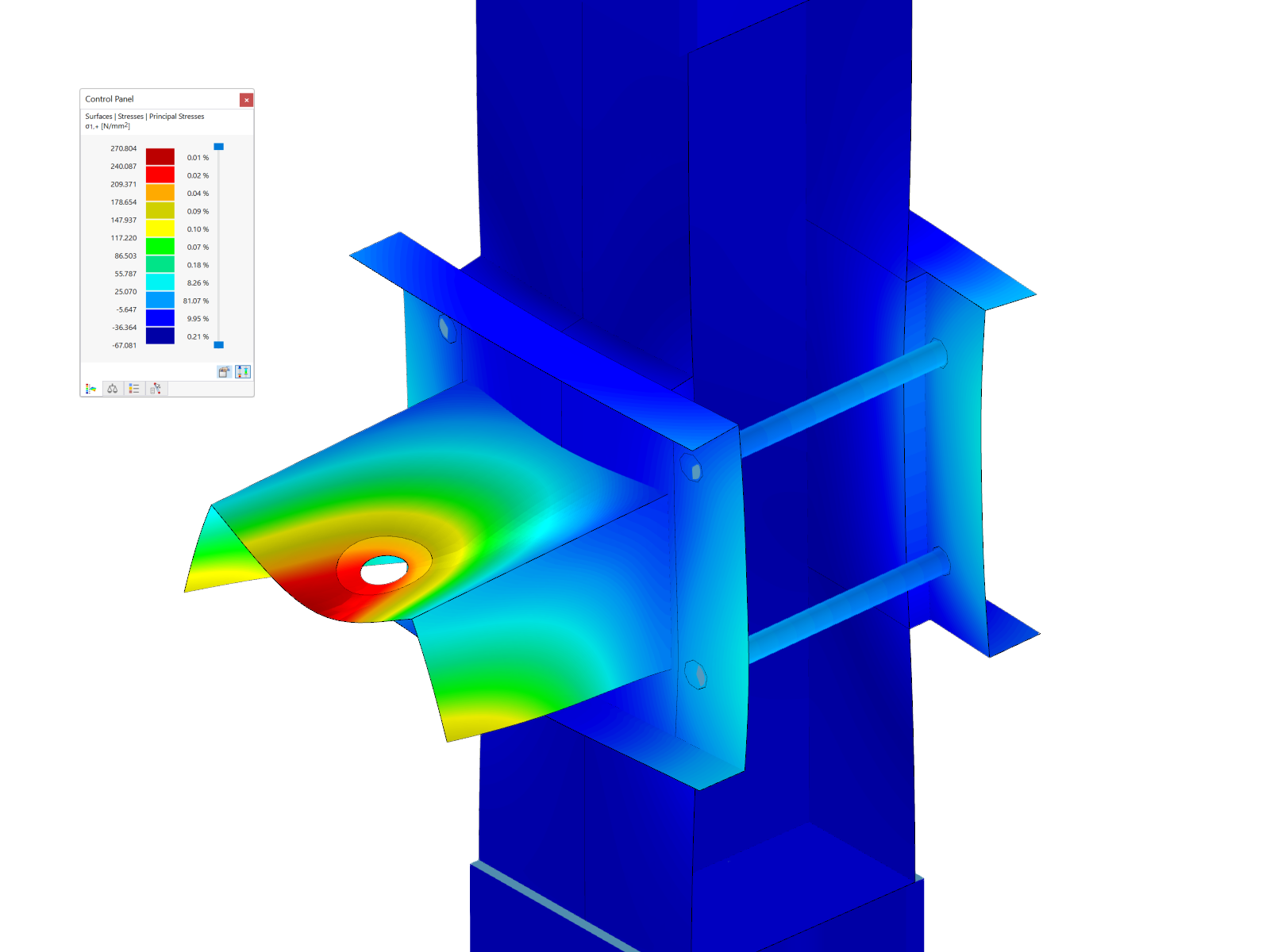
The Stress-Strain Analysis add-on performs general stress analysis by calculating the existing stresses and comparing them with the limit stresses.

The two-part Optimization & Costs / CO2 Emission Estimation add-on finds suitable parameters for parameterized models and blocks via the artificial intelligence (AI) technique of particle swarm optimization (PSO) for compliance with common optimization criteria. Furthermore, this add-on estimates the model costs or CO2 emissions by specifying unit costs or emissions per material definition for the structural model.
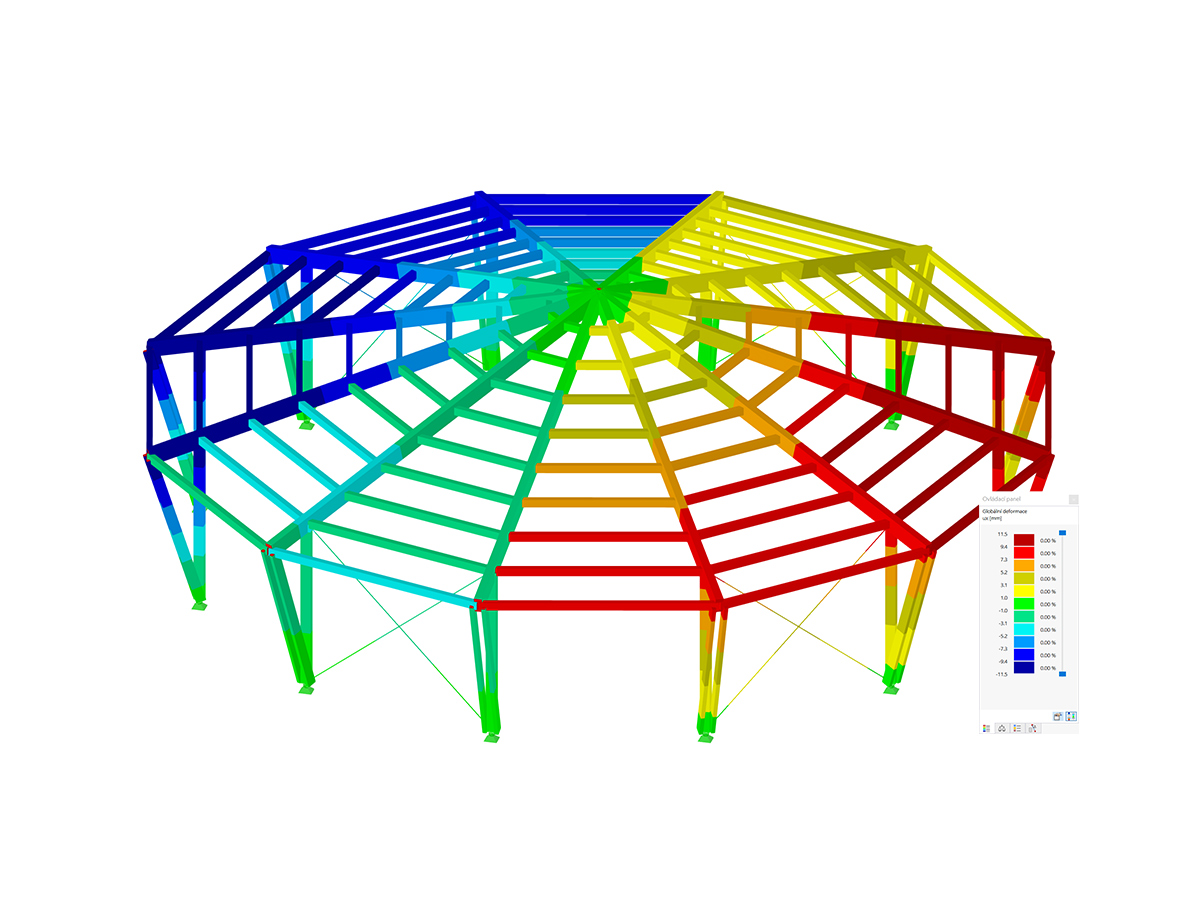
The modern 3D structural analysis and design program is suitable for the structural and dynamic analysis of beam structures as well as the design of concrete, steel, timber, and other materials.

The Steel Design add-on performs the ultimate and serviceability limit state design checks of steel members according to various standards.

The Structure Stability add-on performs the stability analysis of structures. It determines critical load factors and the corresponding stability modes.

The Stress-Strain Analysis add-on performs a general stress analysis by calculating the existing stresses and comparing them to the limit stresses.

The two-part Optimization & Costs / CO2 Emission Estimation add-on finds suitable parameters for parameterized models and blocks via the artificial intelligence (AI) technique of particle swarm optimization (PSO) for compliance with common optimization criteria. Furthermore, this add-on estimates the model costs or CO2 emissions by specifying unit costs or emissions per material definition for the structural model.

The stand-alone program RSECTION determines the section properties for any thin-walled and massive cross-sections.

Structural engineering software for a finite element analysis (FEA) of planar and spatial structural systems consisting of plates, walls, shells, members (beams), solids, and contact elements

Plastic design of cross-sections according to the Partial Internal Forces Method (PIFM) and Simplex Method

Fatigue design of members and sets of members according to EN 1993-1-9

Generation of geometrically complex 3D tower structures, such as lattice towers and radio masts

Generation of the equipment for lattice towers of mobile operators

Generation of the wind, ice, and variable loads for lattice towers

Determination of effective lengths for lattice towers

Design of triangular and quadrilateral lattice towers according to the European standards

Design of nominally pinned bolted connections of members used in lattice towers according to Eurocode 3

Structural engineering software for design of frame, beam, and truss structures, as well as for linear and nonlinear calculations of internal forces, deformations, and support reactions

Fatigue design of members and sets of members according to EN 1993-1-9

Plastic design of cross-sections according the Partial Internal Forces Method (PIFM) and Simplex Method

Generation of geometrically complex 3D tower structures, such as lattice towers and radio masts

Generation of equipment for lattice towers of mobile operators

Generation of wind, ice, and variable loads for lattice towers

Determination of effective lengths for lattice towers

Design of triangular and quadrilateral lattice towers according to the European standards

Design of nominally pinned bolted connections of members used in lattice towers according to Eurocode 3
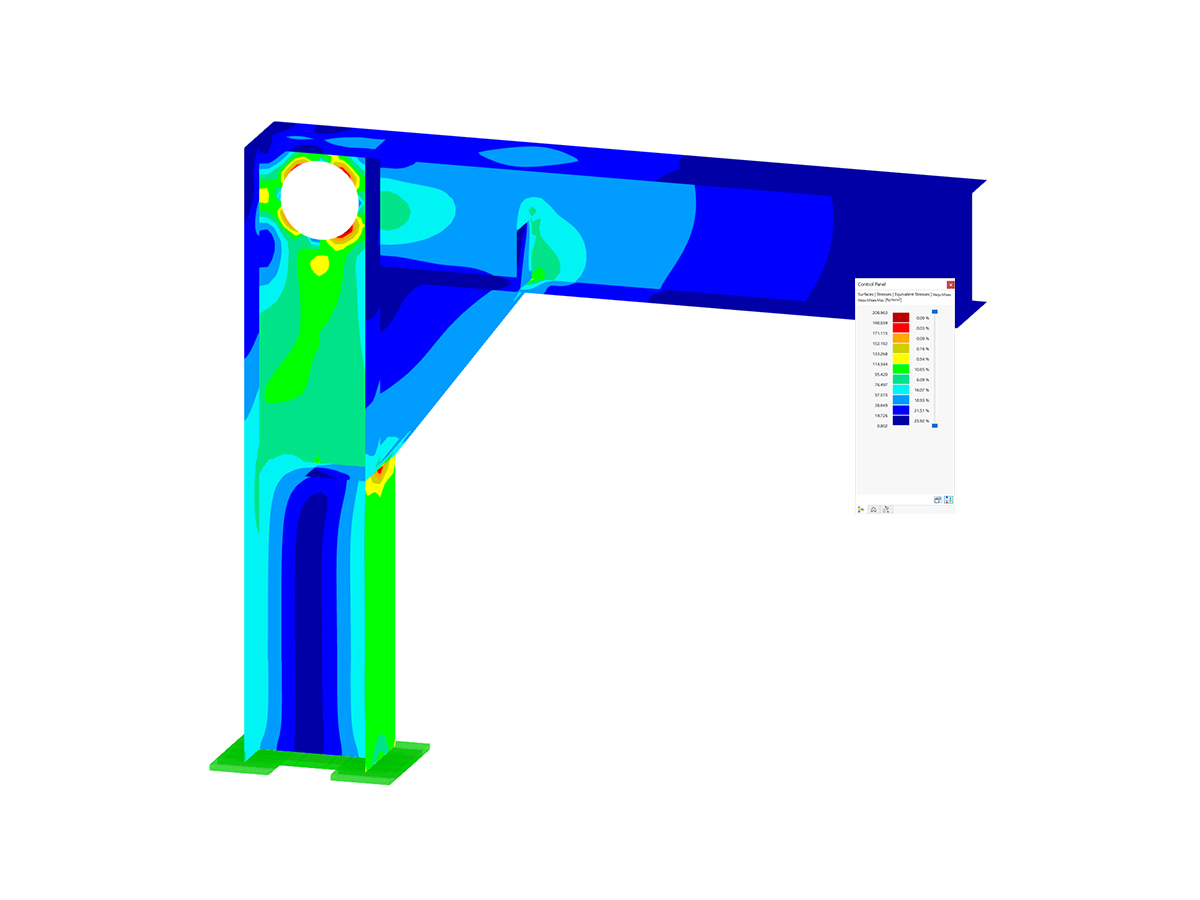
The Nonlinear Material Behavior add-on allows you to consider material nonlinearities in RFEM for example, isotropic plastic, orthotropic plastic, isotropic damage).
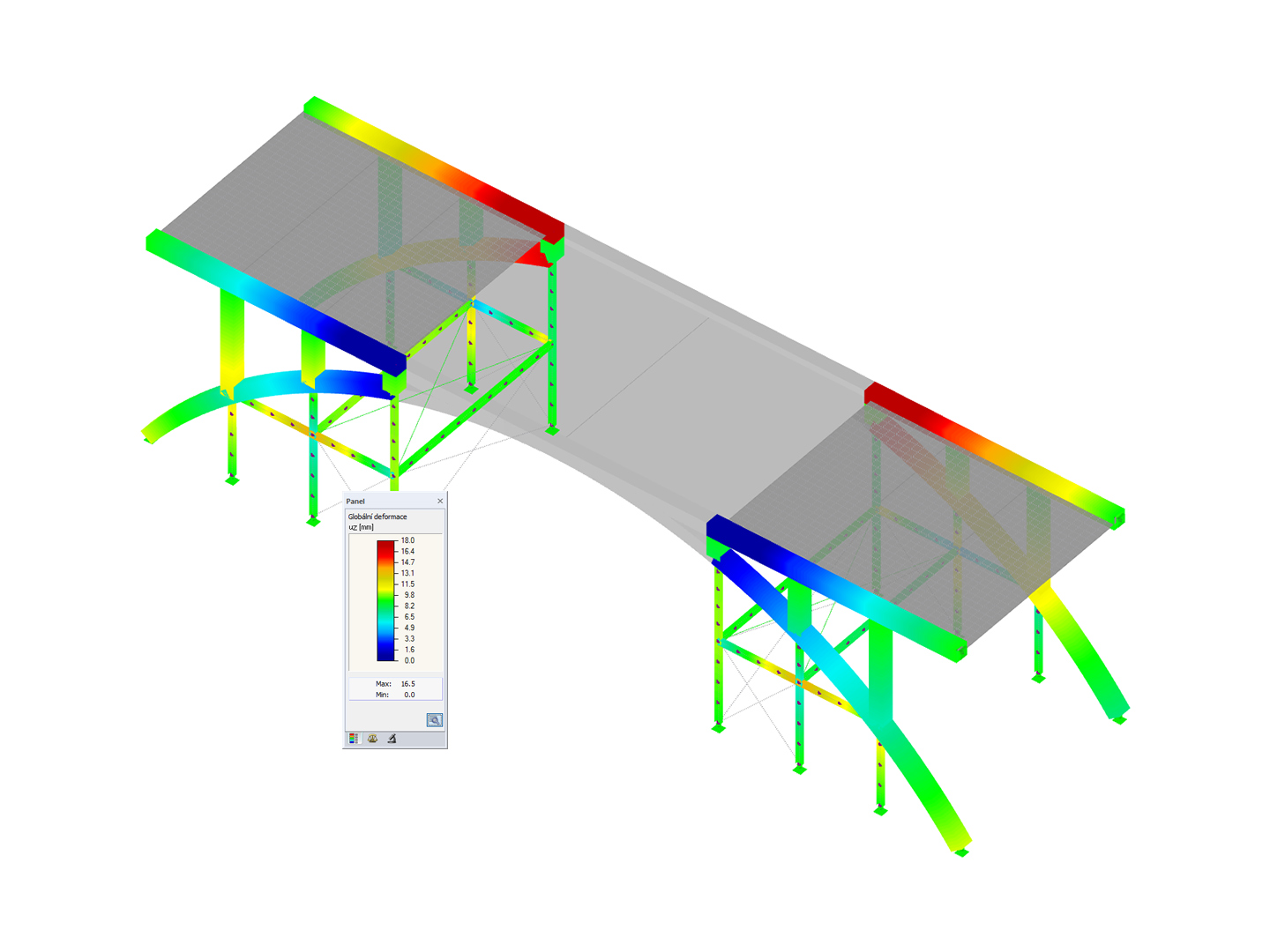
The Construction Stages Analysis (CSA) add-on allows for considering the construction process of structures (member, surface, and solid structures) in RFEM.
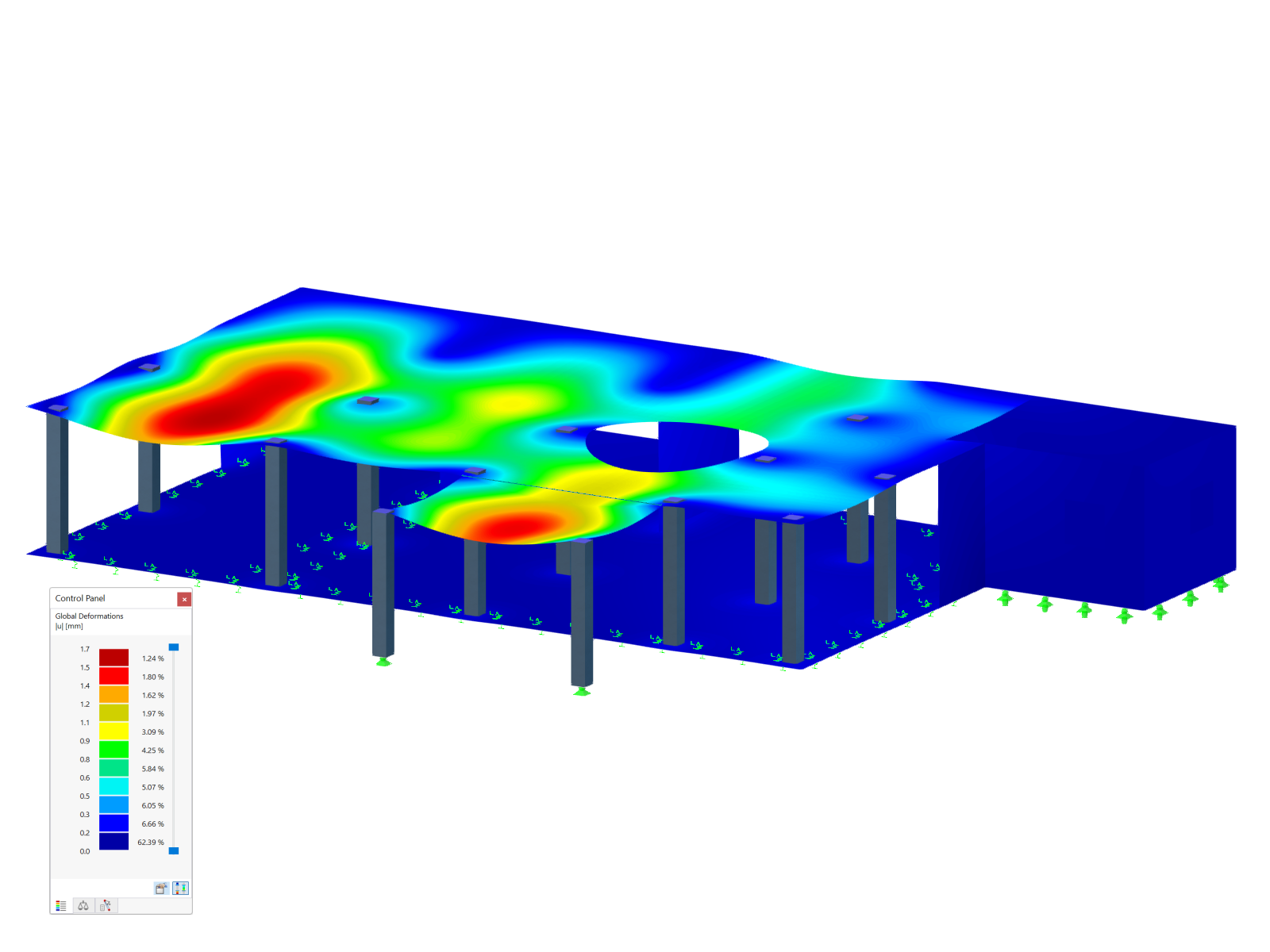
The Time-Dependent Analysis (TDA) add-on allows you to consider the time-dependent material behavior of members and surfaces. The long-term effects, such as creep, shrinkage, and aging, can influence the distribution of internal forces, depending on the structure.
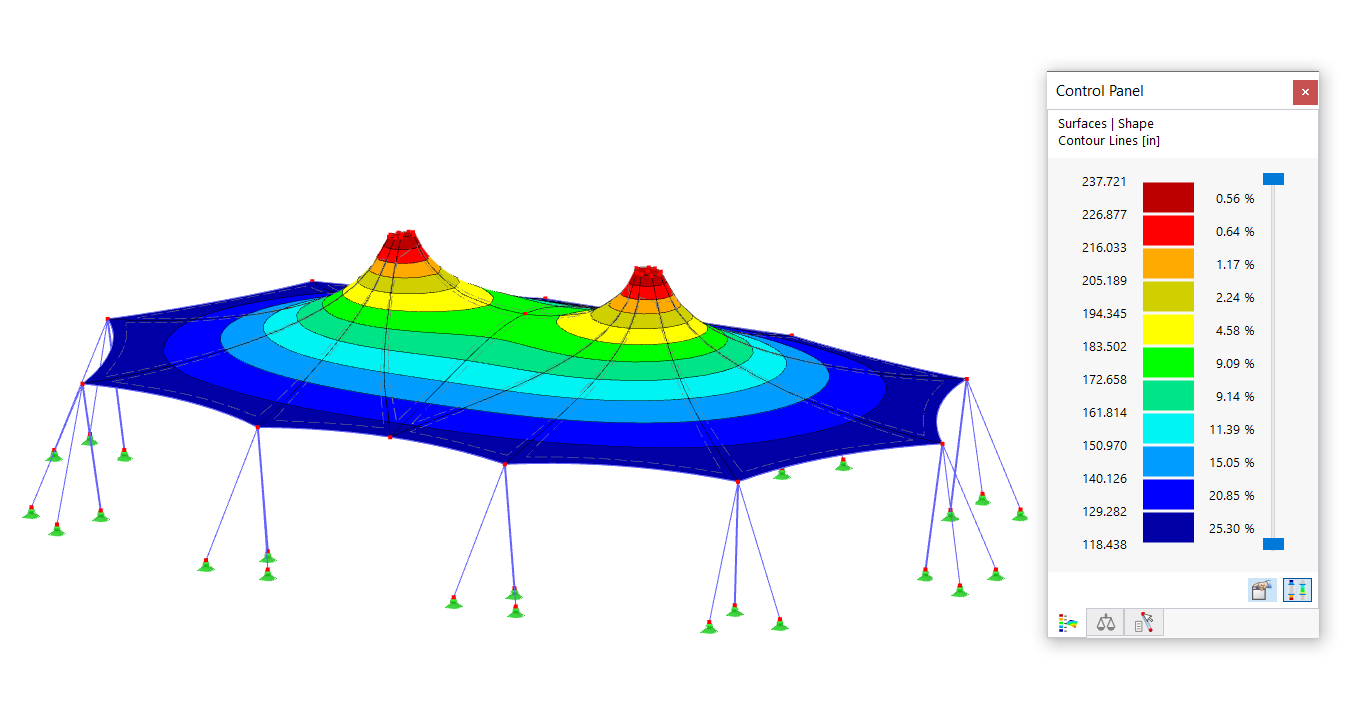
The Form-Finding add-on finds the optimal shape of members subjected to axial forces and tension-loaded surface models. The shape is determined by the equilibrium between the member axial force or the membrane stress and the existing boundary conditions.
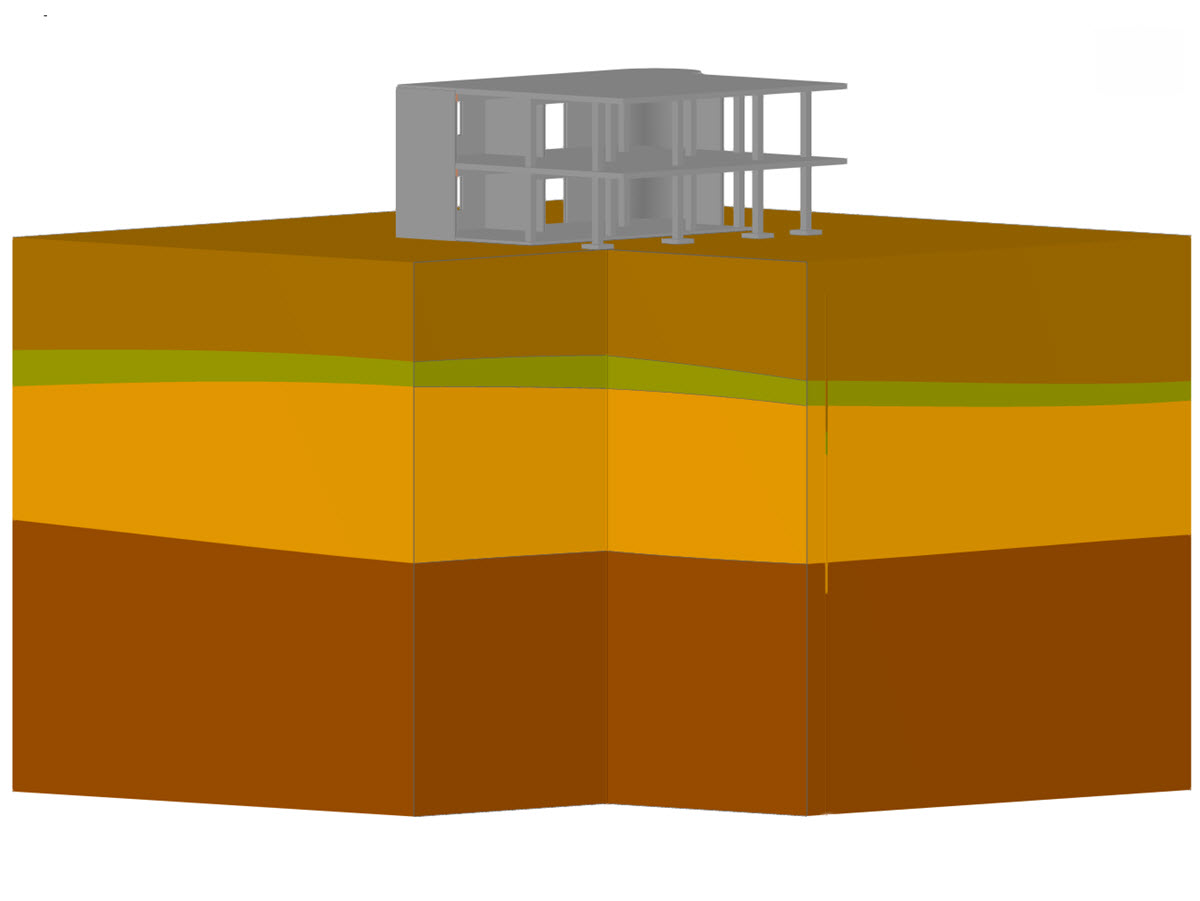
In RFEM, the Geotechnical Analysis add-on uses properties from soil samples to determine the soil body to be analyzed. The accurate determination of soil conditions significantly affects the quality of the structural analysis of buildings.

The Building Model add-on for RFEM allows you to define and manipulate a building using stories. The stories can be adjusted in many ways afterwards. The information about stories and the entire model (center of gravity) is displayed in tables and graphics.
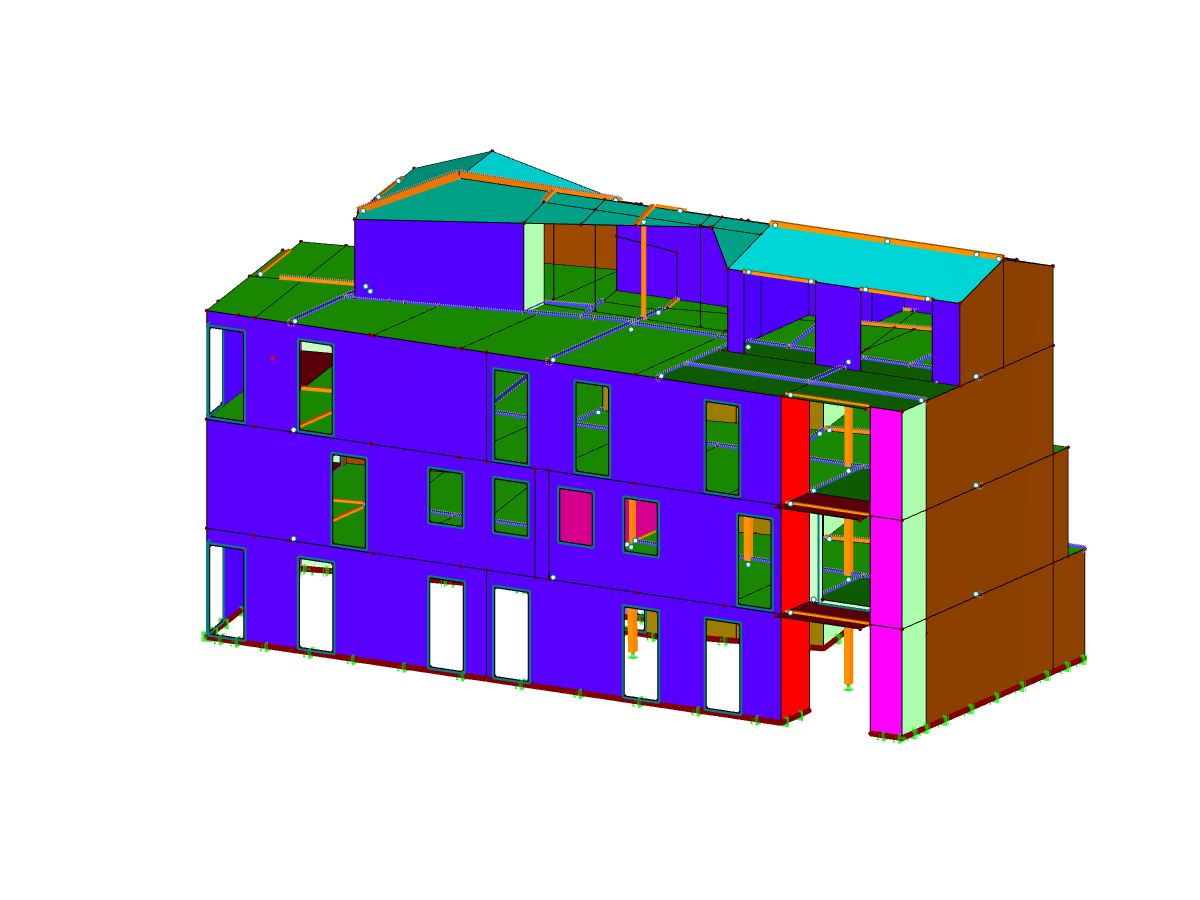
The Multilayer Surfaces add-on allows you to define multilayer surface structures. The calculation can be carried out with or without the shear coupling.
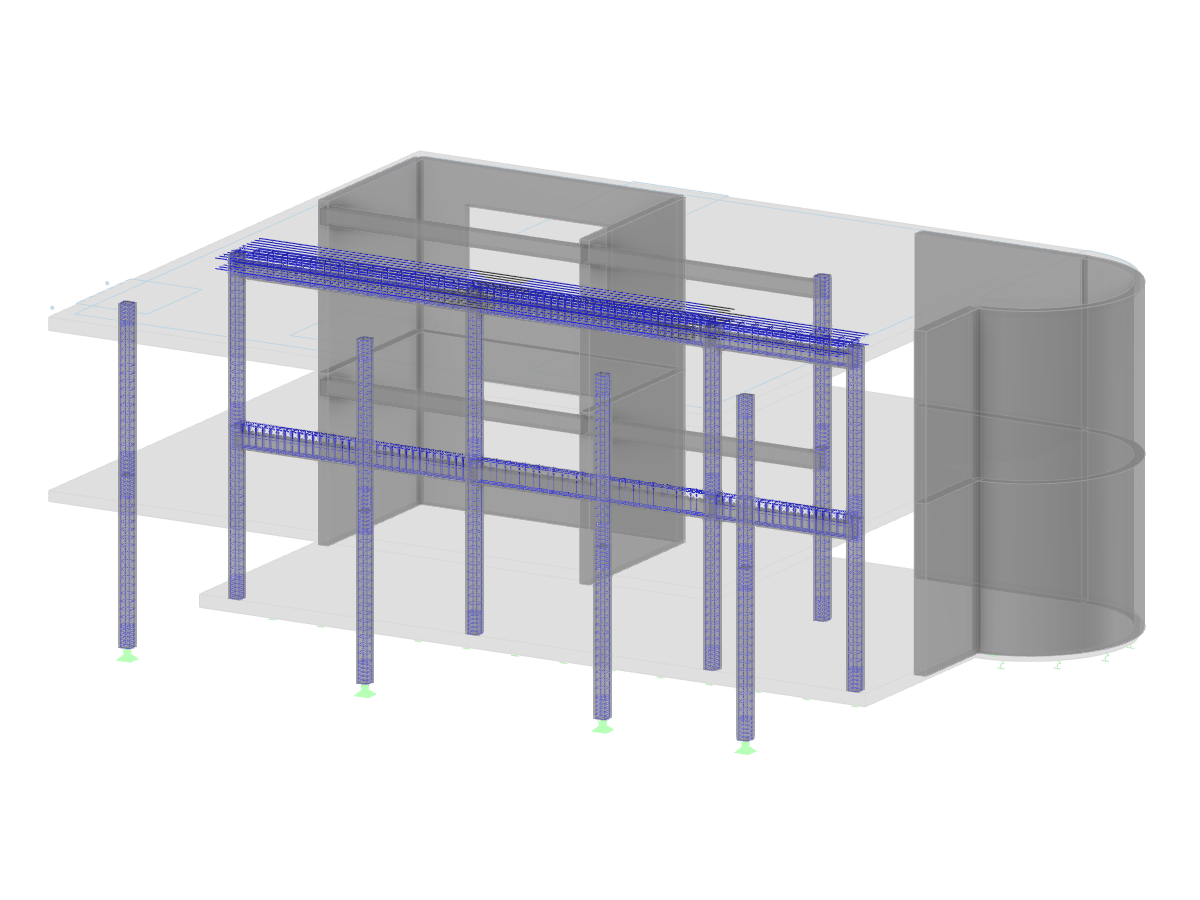
The Concrete Design add-on allows for various design checks according to international standards. You can design members, surfaces, and columns, as well as perform punching and deformation analyses.
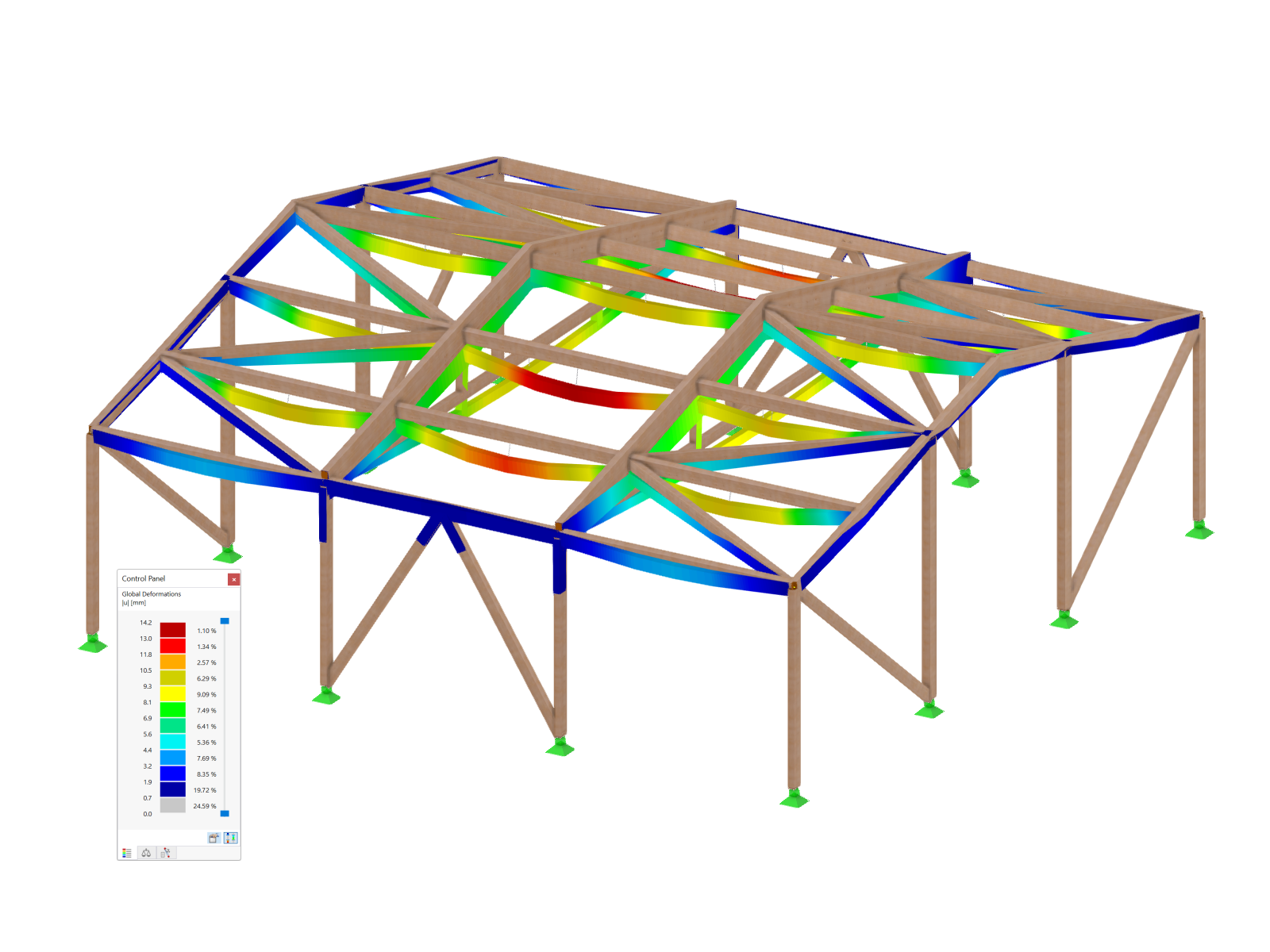
The Timber Design add-on performs the ultimate, serviceability, and fire resistance limit state design checks of timber members according to various standards.
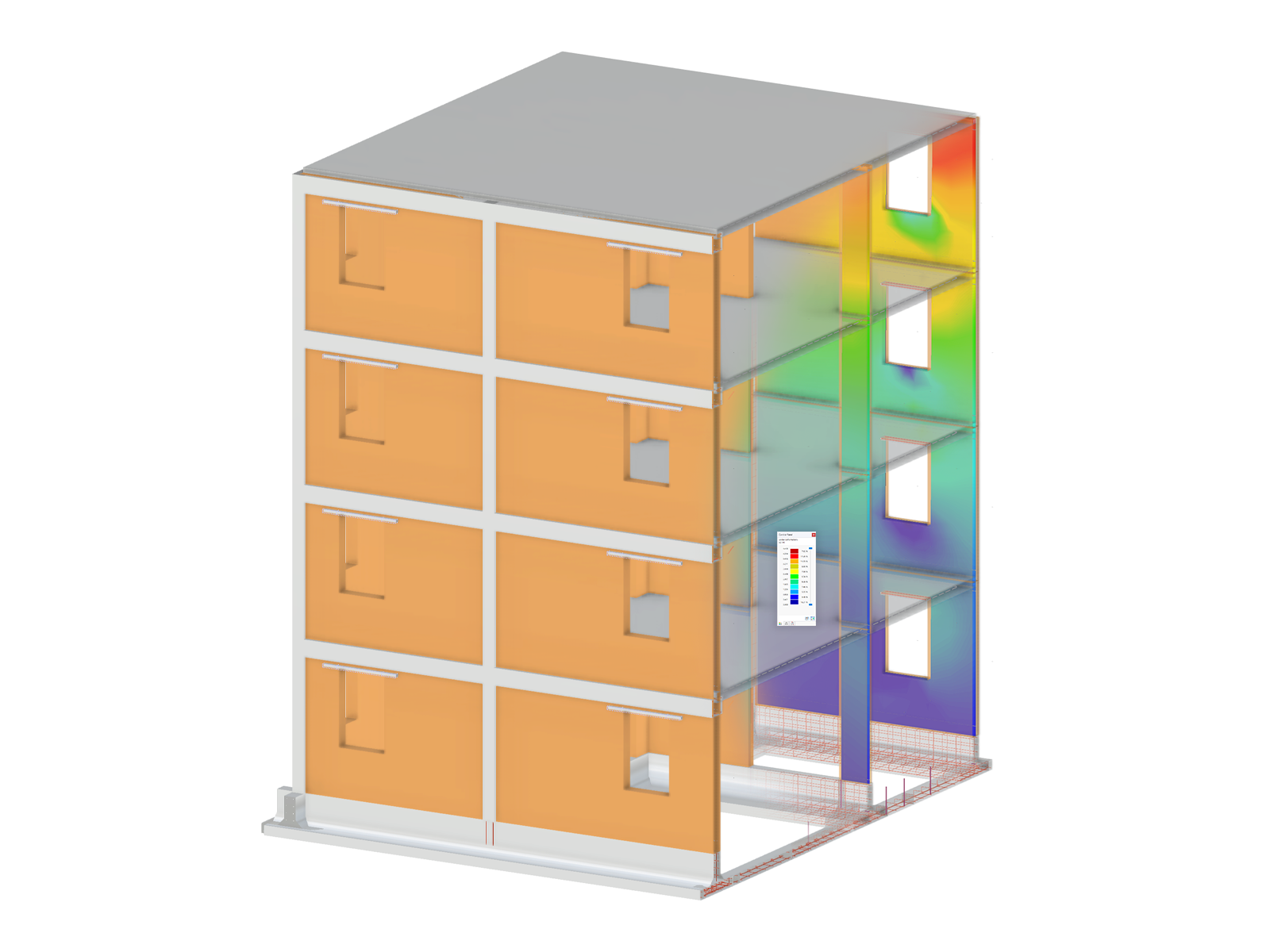
The Masonry Design add-on for RFEM allows you to design masonry using the finite element method. It was developed as part of the research project titled DDMaS – Digitizing the Design of Masonry Structures. The material model represents the nonlinear behavior of the brick-mortar combination in the form of macro-modeling.
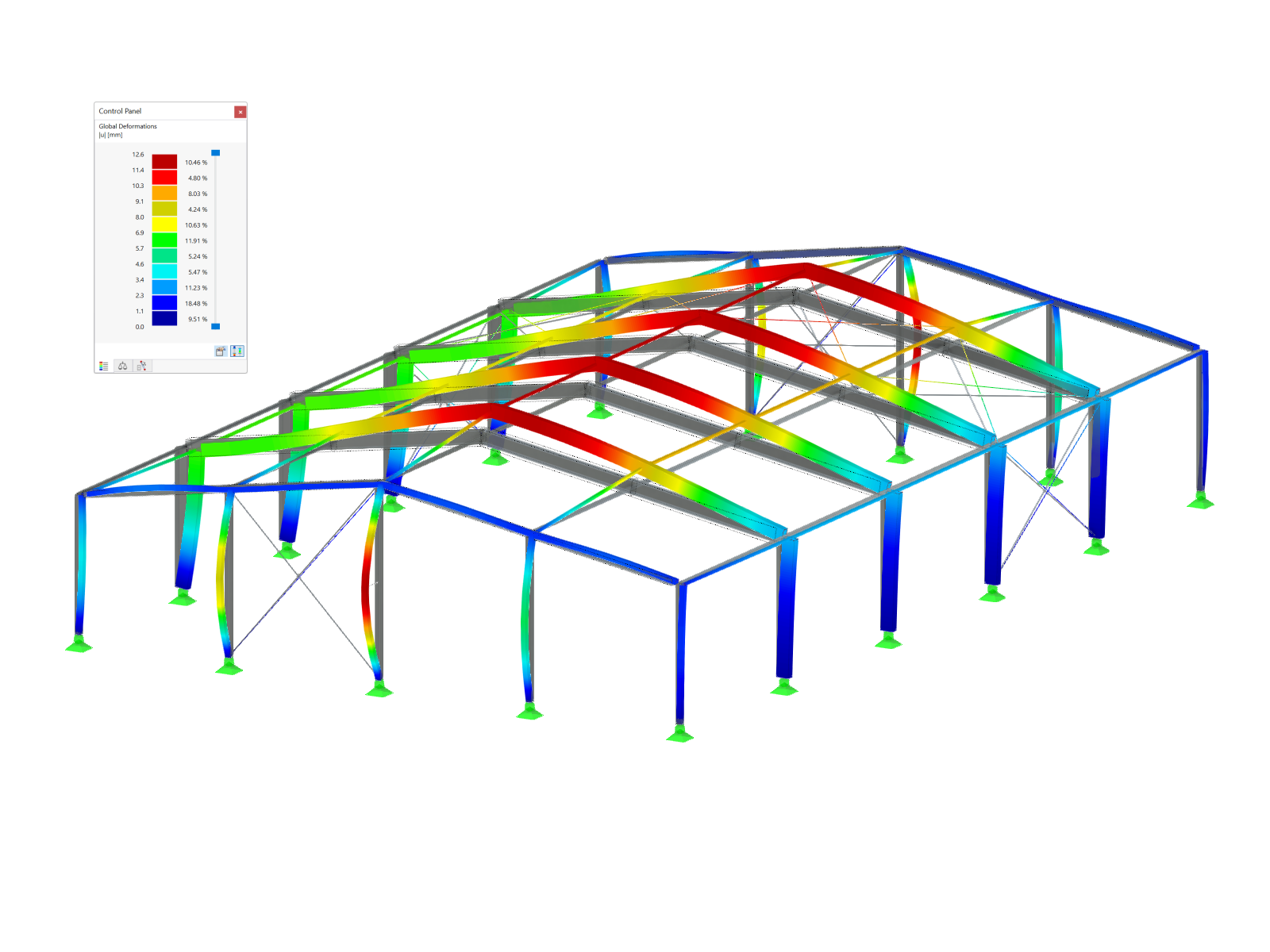
The Aluminum Design add-on performs the ultimate and serviceability limit state design checks of aluminum members according to various standards.
